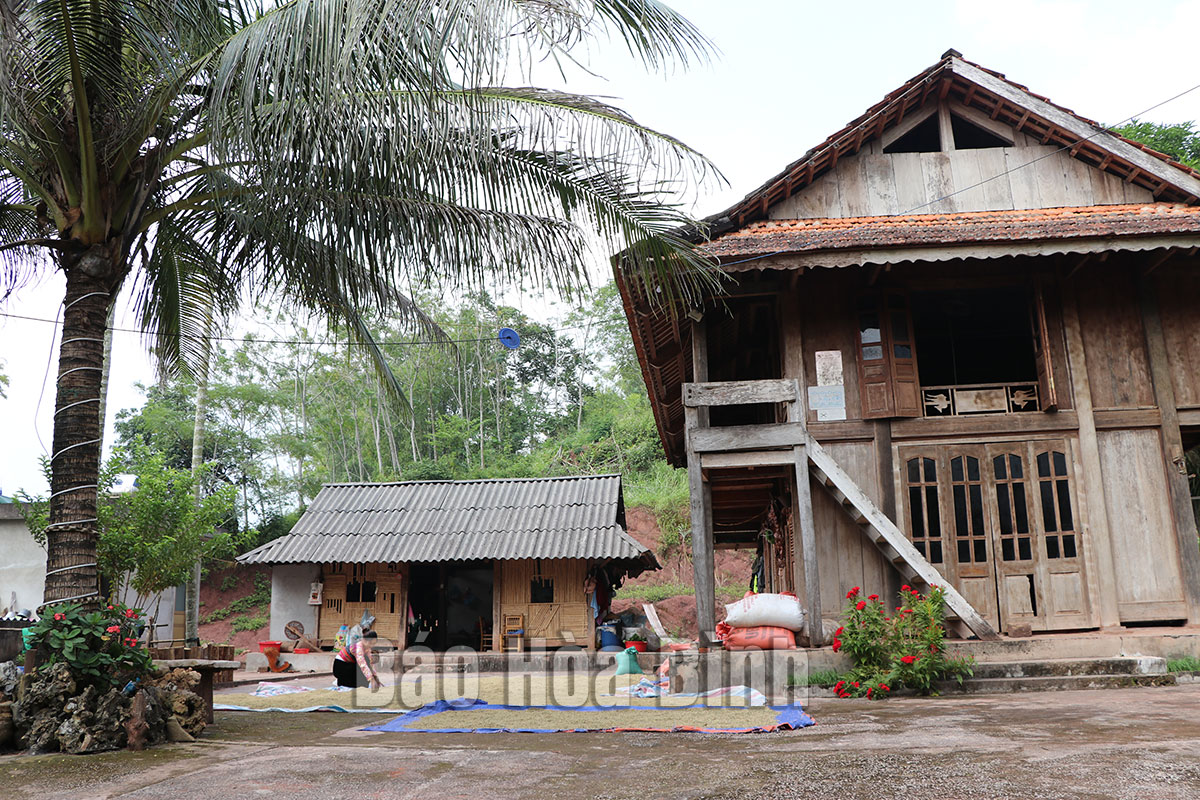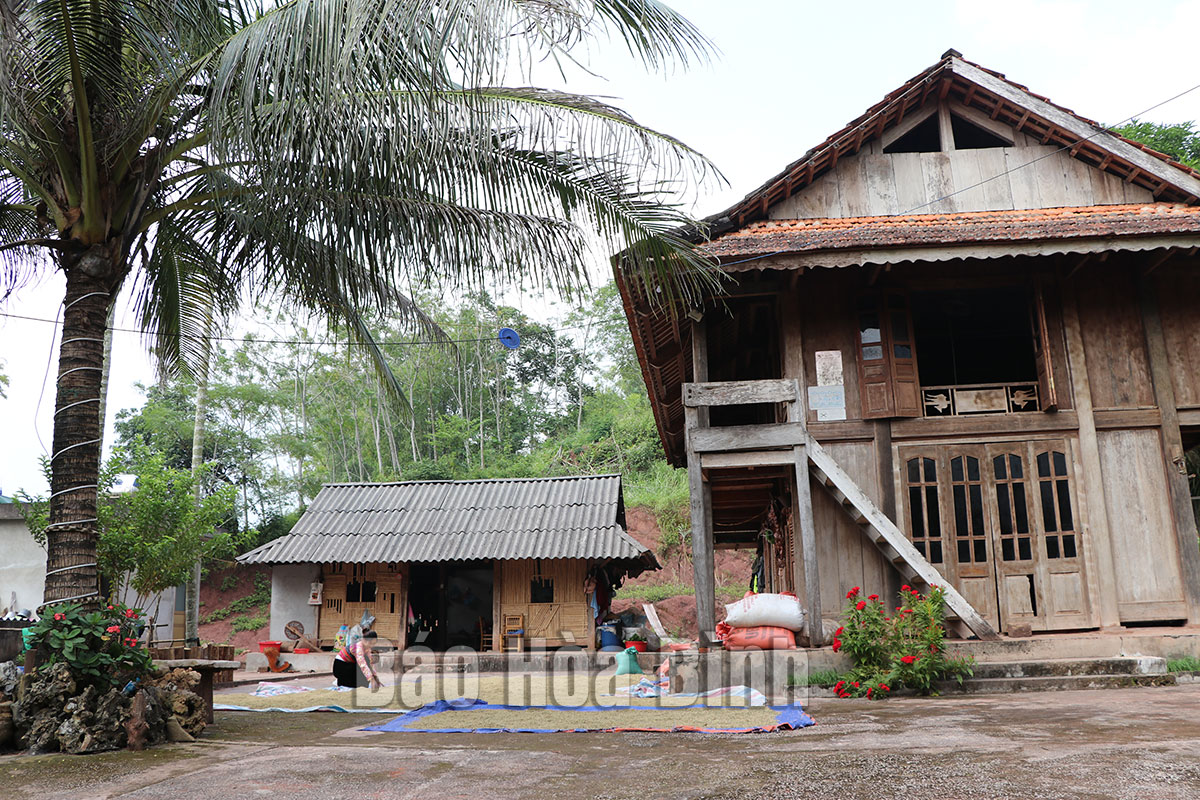
(HBO) - With over 80 percent of Thai ethnic group living, Bao La commune in Mai Chau district has a cool climate and terrain surrounded by mountains, terraced fields, waterfalls and winding streams flowing all year round. These are existing potential and advantages to develop tourism, with the building of a community-based tourism trademark as a highlight.

Peaceful space at Thanh Nghi homestay in Chieng Pung hamlet, Bao La
commune, Mai Chau district.
Stopping at Thanh Nghi homestay, Chieng Pung hamlet to immerse in the peaceful
space of the rural area and contemplate the immense rice fields, the first
impression when entering the homestay was the friendly smile of the host, the
old stilt house and the yard full of flowers. Visitors to the homestay, which
was officially operational in 2018, could experience life of Thai ethnic people
by going out to the fields to harvest rice, fishing and bathing in
streams.
Owner of the homestay Ha Thanh Nghi said when
embarking on the development of community-based tourism, he and other
households wanted tourists to discover and experience the unique customs of
Thai ethnic people, thus gradually establishing tourism development groups to
create a local community tourism trademark.
Taking advantage of majestic natural landscapes, mild climate and unique
culture of Thai ethnic group, 10 households in the commune have engaged in
community tourism development. Visitors could join trekking tours on Hang Kia –
Pa Co – Cun Pheo – Bao La route, cycle on dangerous roads and paraglide. A
market fair held every Friday morning also attracts residents in the area and
nearby localities. Coming there, visitors could see charming girls in Thai
costumes, explore local specialties and handicrafts made by locals.
One of the highlights in resort tourism development in Bao La commune is Avana
Retreat Mai Chau Resort, which was recently put into operation. On a planned
site of 15ha, it houses villas on the hillside overlooking golden terraced
fields during the ripe rice season. In particular, the resort boasts a
waterfall which is considered the most beautiful in Mai Chau. Avana Retreat Mai
Chau is rated by tourists as one of the most attractive resorts with new
experiences.
Vice Chairman of the communal People’s Committee Ha Van Hung said over the past
time, local residents have tapped existing potential and advantages to develop
tourism, including community-based tourism. To sustainably develop tourism, the
communal Party Committee and authorities have worked out detailed plans which
define tourism as one of the spearhead economic sectors./.
Located just a 20-minute drive from Hoa Binh City, Ora Hill Farmstay & Glamping Hoa Binh is a captivating new destination nestled in Mo hamlet, Bình Thanh commune, Cao Phong district. Combining farming with leisure, this tranquil retreat is perfect for those seeking balance, joy, and an immersive experience in the expansive beauty of nature.
Muong Bi - Tan Lac is renowned as one of the four famous Muong regions in Hoa Binh province. Blessed by nature with a favourable climate and stunning landscapes, Tan Lac holds great advantages for tourism development. The local tourism industry has made remarkable strides in recent times thanks to the attention and support from the local authorities and sectors.
With its strategic location, well-developed transport network, and diverse soil and climatic conditions, Hoa Binh is emerging as a must-visit destination in Vietnam's northwestern tourism corridor. The province boasts numerous attractions, including the Kim Boi hot springs (Kim Boi district), the Dau Rong cave complex (Cao Phong), the Mai Chau valley (Mai Chau), and the iconic Hoa Binh hydropower plant.
The northern mountainous province of Hoa Binh has been listed among the 71 most beautiful places to visit worldwide by the prestigious US travel magazine Condé Nast Traveller.
Hoa Binh province’s rich natural and cultural resources position it as a prime location for developing community-based tourism (CBT). In recent years, support from central and provincial policies, as well as assistance from non-governmental organisations, have encouraged local ethnic minority and mountainous communities to actively engage in the sector.



